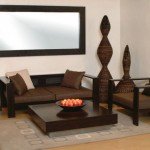How you style your interiors depends on your personal preferences, but learning about a couple of interior design basics can come in handy. In this article, we’re listing out five ideas that will help boost the look of your interiors. Take a look.
Rely on a theme or style to create a sense of cohesiveness
Themes are practical design tools for achieving a sense of cohesiveness in your living space. Harmony and unity are two principles that make use of theme as the key element in creating spaces that are easy to digest, often dictating our perception of the room. For example, the repetitive use of certain colors, shapes, or patterns throughout your home will make it feel cohesive and well-thought-out, while the use of particular style or theme will make your rooms fit like pieces of a puzzle. Showcase similarity by incorporating elements that fit together – go for a monochromatic color scheme and then break the monotony by including bold prints such as accent pillows, rugs, or chairs. That way, you’ll enhance the visual interest of your living space as well as wrap up the room’s design.
Strive for balance to design a harmonious living space
One of the basic principles in interior design, balance is key to designing spaces that emulate serenity and stability. It’s a crucial ingredient that largely impacts the feel of the room, so you need to be mindful about the placement of your furnishings and decor, as well as the color scheme you choose to go with. You can opt for asymmetrical, symmetrical, or radial type of balance depending on the look you’re striving to achieve. Symmetrical balance relies on the use of focal points which are then surrounded with the mirrored arrangement of decor elements on each side, thus achieving harmony and uniformity. Asymmetrical balance has a less formal feel to it and it’s achieved through the use of textures and colors that are equally distributed around the room. Last but not least, radial balance focuses the eye on central elements and utilizes circular seating areas as focal points, resulting in arrangements perfect for socializing.
Furnish with simple, versatile, high-quality pieces
Furniture has an important role in designing living spaces – it determines the function of the room, and the way we choose to arrange it can also affect the flow of our living space. For example, living rooms are one of the areas with the highest traffic in the home, so you want to make sure the room’s layout is optimized for your day-to-day needs. It’s important that you pay attention to the scale, proportion, and the size of the room and arrange your pieces accordingly. As for the furniture itself, it’s best to look for pieces that are simple in design and preferably in neutral tones as they’ll be more likely to fit any changes you make regarding the room’s color scheme. Invest in quality sofas that will stand the test of time, equip your interiors with furnishings that perform double duty, and bring in versatile pieces you can use for years to come.
Use texture to add visual weight to the room
Another prominent interior design element, texture is used to add depth to a living space and make it more visually appealing. It is the key ingredient that prevents the room from looking flat and when incorporated properly, it can elevate the room’s design to the next level. Adding a couple of throw pillows and blankets on your bed is a good way to bring in some texture, while throw rugs and wallpapers will add dimension to the room and transform the way it feels. Even the architectural features of your home can bring in texture, so if you happen to have tray ceilings by any chance, don’t hesitate to shift the attention to them.
Let there be light
Regardless of the style of the home, lighting plays a vital role in how the room looks and feels. It’s also one of the easiest ways to transform your living space and make a world of a difference. You can either choose lighting fixtures that complement the design and colors of other decor pieces, or you can make a statement by adding fixtures that will contrast the room’s design and serve as eye-catching elements. Pay attention to the function of each room and choose accordingly. Under-cabinet lighting would be the perfect addition for your kitchen workspace, floor lamps can create an intimate atmosphere in your living room, while dimmers would be ideal for a relaxing bedroom retreat.
Different design elements have different roles, but when incorporated successfully, they can result in marvelous, well-thought-out interiors. With these five tips in mind, decorating your living space shouldn’t present a challenge!












